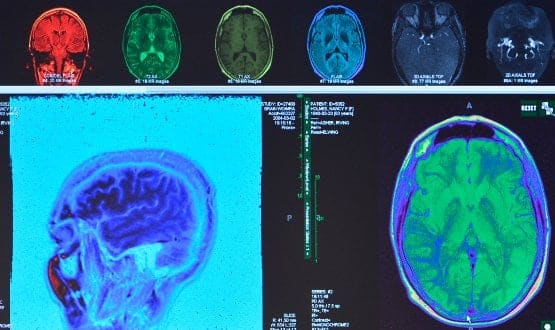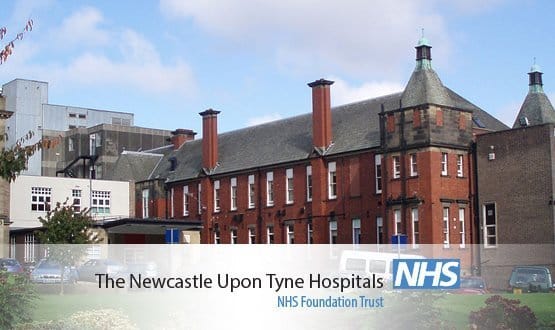PACS to the future
- 14 November 2012

The UK Imaging Informatics Group has its roots in the PACS and teleradiology special interest group of the Royal College of Radiologists that was formed in 1998.
It was reconstituted in its current form in 2010. But it has always existed as a forum for debate about the development of picture archiving and communications systems and teleradiology, and the relationship between digital imaging systems and electronic patient records.
Group chair Dr Neelam Dugar, a consultant radiologist at Doncaster Royal Infirmary, says its autumn meeting, which was held alongside EHI Live 2012 last week, came at a highly critical time for imaging informatics in the NHS.
“With around 80% of imaging contracts due to expire from June onwards, many of the 128 trusts that received PACS and radiology information systems from the National Programme [for IT in the NHS] are still deciding which way to go next,” she said.
“They can either negotiate an extension, join other trusts in a consortium to explore the market, go out to tender themselves, or use the national framework negotiated by NHS Supply Chain.
“Many still need to plan their future PACS/RIS service provision as the management of these systems falls back into the hands of their local NHS organisations."
‘Think prenuptial agreement’
After a morning devoted to imaging standards and topics such as night-time teleradiology, the conference got down to the nitty-gritty of these issues; focusing on the ins and outs of planning and procuring PACS/RIS systems, and the need to adopt vendor neutral archiving to manage and share images more flexibly.
Independent consultant Tony Corkett – until recently transition lead at Barts Hospital – stressed the need for NHS IT teams to plan well ahead.
Drawing the analogy of a prenuptial agreement, he said: “Ensure that whatever contract route you choose, you’re clear before you sign what the terms actually mean to you – both clinically and from an IT perspective.
“If the VNA has come via a larger PACS or technology contract, for instance, will you be able to separate this out if necessary?
“You may wish to swap the technology platform, the prime contractor, the PACS or the VNA itself, so make sure this is covered in the agreement.
“Also, check that you understand any licensing implications of increasing the use of the VNA. If any of these things are possibilities, then make sure you plan for it right from the start.”
Moreover, let the supplier do the legwork, he suggested. “Ask them to produce a plan that includes detailed processes, documentation, data transfer, systems migration, security and segregation of the technology.
“Get them to guarantee no deterioration or disruption of service. Request a timetable – and identify potentially critical issues.”
Corkett concluded that the most important thing for delegates to take away from the meeting was the need to take control for themselves.
“After all, June is less than a year away,” he said. “So the procurement process will come around quicker than you can say “picture archiving and communication systems.”
Going it alone
Research by EHI Intelligence has found that some geographical differences are opening up when it comes to the decisions that trusts are making.
In the national programme clusters where Accenture was the local service provider, trusts have been offered a Department of Health-negotiated deal to extend their existing contracts; and 75% have chosen to do this.
No similar deal has been done for the clusters where CSC was the LSP, and trusts in these areas have been more likely to go out to tender, with smaller trusts often joining larger ones in collaborative tenders.
One trust that has made a decision not to go with the Accenture deal is Doncaster and Bassetlaw Hospitals NHS Foundation Trust. So Dr Dugar’s presentation on how she and her team went out to tender for themselves was hotly anticipated.
Her message was simple: the process is fairly straightforward, so long as you seek outside help with the contract process.
“Based on practical experience, I urge you to seek external advice on contract documentation as this will undoubtedly be the first time your contract staff have negotiated such a purchase themselves,” she said.
“Previous procurements have been handled by LSPs, which means NHS contract departments typically lack expertise in competitive dialogue and OJEU for IT procurements,” she added.
Dr Dugar argued that the OJEU process is not difficult and recommended competitive dialogue as a robust process for IT system procurement.
“Without it, you don’t have the same opportunity to evaluate and compare the offerings of different suppliers,” she said. “Unlike a standard tendering process, it allows you to really get to the bottom of proposed systems and rate them accordingly.”
She urged trusts to go out to tender if only to stimulate the imaging vendors and encourage innovation in the marketplace, saying: “Let’s be absolutely clear, if you don’t change your systems on a regular basis, you won’t get the innovation and you’ll end up with 20 year-old technology!
“That’s why it’s important to get on top of the procurement and contract processes. Once you have the first contract under your belt, you’ll then be in a position to do it yourself next time round.”
Some ‘dos and don’ts’
Andrew Daly, a procurement specialist at law firm Hempsons, also outlined the legal implications of competitive dialogue, OJEU and the NHS Supply Chain’s Framework Agreement for PACS/RIS when negotiating new contracts.
In the case of the competitive dialogue process, he said procurement teams should run simultaneous dialogue with all short-listed bidders and treat each one fairly and equally.
“Be careful not to reveal to other bidders any proposed bidder solutions,” he advised. “And on no account try to negotiate, cherry pick ideas, materially vary your criteria materially, or amend your original evaluation criteria.”
Maxine Clarke, PACS manager at Norfolk and Norwich University Hospital, rounded off the meeting with an entertaining account of her own the ‘do’s and don’ts’ when changing PACS supplier.
On the ‘don’t’ side, she advised: “Never underestimate how long it will take or be persuaded to shorten the plan to fit a timescale – consider a phased approach if necessary. And finally, avoid the urge to over-plan the plan!”
Heading up her list of ‘do’s’ was the need to constantly communicate. “Tell radiology lots of times what’s happening and keep the rest of the trust up to date with timeframes,” she declared.
“Also, keep off-site users, like the primary care trust and GPs, informed of what’s happening. And let all these people know if timings slip.
“Agree system expectations and workflows within the organisation – and agree the same goals with your chosen supplier. And go out of your way to engage with trust IT – invite them in and make them tea!”




